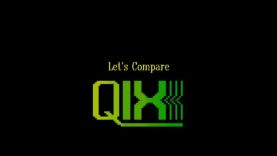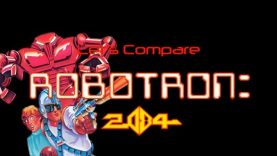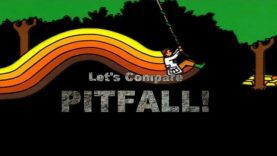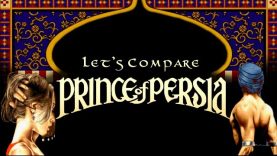Let’s Compare ( Space Invaders )
Gaming History Source
Video Locations:
1. Arcade 0:35
2. RCA Studio 2 1:54
3. Chip 8 2:53
4. Dragon 32/64 3:54
5. Apple 2 5:00
6. Amstrad 5:56
7. ZX Spectrum ( Space Intruders ) 6:57
8. ZX Spectrum ( Space Raiders ) 7:58
9. Oric 1 ( Space Intruders ) 8:58
10. BBC Micro 9:58
11. Atari 2600 11:00
12. Atari 800 12:00
13. Atari 5200 13:00
14. Intellivision ( Space Armada ) 14:00
15. Bally Astrocade ( Astro Battle ) 15:02
16. Amiga ( INTRO ) 16:03 ( GAME ) 17:11
17. TI99 ( TI Invaders ) 18:35
18. Sega Master System 19:36
19. Game Gear 20:45
20. Colecovision 21:45
( Space Invaders Collection Pack )
21. MSX 22:45
22. Gameboy 23:48
23. Wonderswan 24:49 ( INTRO ) 25:12 ( GAME )
24. Sega SG 1000 26:18
25. Gameboy Color 27:18
26. Atari 7800 ( Home Brew ) 28:18
27. Atari ST 29:12
28. DOS 30:23
29. Commodore Vic 20 ( Avengers ) 31:22
30. Sharp X68000 32:23
31. Commodore 64 ( Avengers ) 33:24
32. Famicom 34:26
33. Gameboy Color / Super Gameboy 35:23
34. FLASH 36:25
35. Virtual boy 37:27
36. TG16 CD 38:32
37. Super Nintendo 40:32 ( INTRO ) 40:56 ( GAME )
38. Gameboy Advance 42:26
39. Sega Genesis ( Space Invaders 91 ) 43:26
40. Sega Saturn 44:27
41. Nintendo DS 45:37
Video Description Source:
http://en.wikipedia.org/wiki/Space_Invaders
Space Invaders (スペースインベーダー Supēsu Inbēdā?) is an arcade video game designed by Tomohiro Nishikado and released in 1978. It was originally manufactured and sold by Taito in Japan, and was later licensed for production in the United States by the Midway division of Bally. Space Invaders is one of the earliest shooting games and the aim is to defeat waves of aliens with a laser cannon to earn as many points as possible. In designing the game, Nishikado drew inspiration from popular media: Breakout, The War of the Worlds, and Star Wars. To complete it, he had to design custom hardware and development tools.
It was one of the forerunners of modern video gaming and helped expand the video game industry from a novelty to a global industry (see golden age of video arcade games). When first released, Space Invaders was very successful.
The game has been the inspiration for other video games, re-released on numerous platforms, and led to several sequels. The 1980 Atari 2600 version quadrupled the system’s sales and became the first “killer app” for video game consoles. Space Invaders has been referenced and parodied in multiple television shows, and been a part of several video game and cultural exhibitions. The pixelated enemy alien has become a pop culture icon, often used as a synecdoche representing video games as a whole.
Game Play:
Space Invaders is a two-dimensional fixed shooter game in which the player controls a laser cannon by moving it horizontally across the bottom of the screen and firing at descending aliens. The aim is to defeat five rows of eleven aliens—some versions feature different numbers—that move horizontally back and forth across the screen as they advance towards the bottom of the screen. The player defeats an alien, and earns points, by shooting it with the laser cannon. As more aliens are defeated, the aliens’ movement and the game’s music both speed up. Defeating the aliens brings another wave that is more difficult, a loop which can continue indefinitely.[1][2][3][4]
The aliens attempt to destroy the cannon by firing at it while they approach the bottom of the screen. If they reach the bottom, the alien invasion is successful and the game ends. A special “mystery ship” will occasionally move across the top of the screen and award bonus points if destroyed. The laser cannon is partially protected by several stationary defense bunkers—the number varies by version—that are gradually destroyed by projectiles from the aliens and player.













